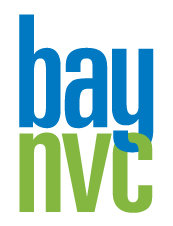One of the things I do in life is talk to strangers whenever I have any inkling of a possible human connection, however momentary. These acts feel precious and a little subversive. Talking about these moments feels oddly more vulnerable than the act of reaching for the connection in the first place, and so I rarely do it. Yesterday I experienced two in a row that were so meaningful I decided to risk the embarrassment for the hope of inspiring others to join me.
I was walking out of the Berkeley Farmers’ Market, and a woman was coming towards me from a distance. Even though I couldn’t see her clearly, her appearance and presence captured my eye. I just loved how she looked. As we walked towards each other, I saw that her hair was completely white, and I thought to myself that she probably wouldn’t think of herself as looking great. As she walked by, I stopped her and asked if I could speak to her for a moment. I saw the expression, the moment of hesitation, wondering who I was or why I would want to talk with her, maybe a concern I might ask for something. And so I told her that what I had to say was unusual, and that I just wanted to tell her that she looked great. Oh, how she lit up in that moment. I mentioned to her that I didn’t imagine she would have that thought about herself. She said she was 76, and I said that was part of what I so enjoyed, that she didn’t pretend to be younger than her age. She smiled and laughed throughout this dialogue, and in the end told me with some glee that she was going to tell her husband. I stayed with it long enough to satisfy myself that she really took it in.
As if this was not enough to make my day, while parking at a grocery store I noticed a young African-American man, probably about 15, whom I had seen previously with other older people who were selling the local street journal for a dollar. This time he was alone, and I imagined he was asking for money himself. Then I witnessed what for me was a remarkable moment as a middle-aged white man approached him and they shared a substantial hug. As I came out of my car, the young man indeed approached me for money. Having just run out of money at the market to the point of owing money to the last vendor, I told him I didn’t have any money, and wouldn’t when I came out either. He was fine with that and thanked me.
On my way out carrying a bunch of bags, he asked me if I needed help. I told him that I still didn’t have money. He told me he knew, and that he still wanted to know if I needed help. As I came around, touched by his offer, he walked across my line of vision with an immense smile, not directed at me. That was when I decided to talk to him. I called out to him and told him I was so happy that he was still able to smile. Whereupon he looked at me for more than a split second. So I proceeded to say some more. I told him I had seen him share the hug with the other man earlier, and that I was so touched, because most young men his age don’t do this, don’t let it show that they need love. He kept looking at me with such intentness. And so I went on, daring the closeness. I said: “Don’t give up. You have some much stacked up against you. Don’t give up. Ever.” Our eyes locked and we looked at each other for a long time. Then I said to him, while still holding his gaze, that in that moment we shared a human connection and knew that we could do anything we wanted, and that no matter what happened, that was always possible, even if everyone told him he couldn’t. His parting words were that he would never forget this moment.
This, too, is possible in our world.


